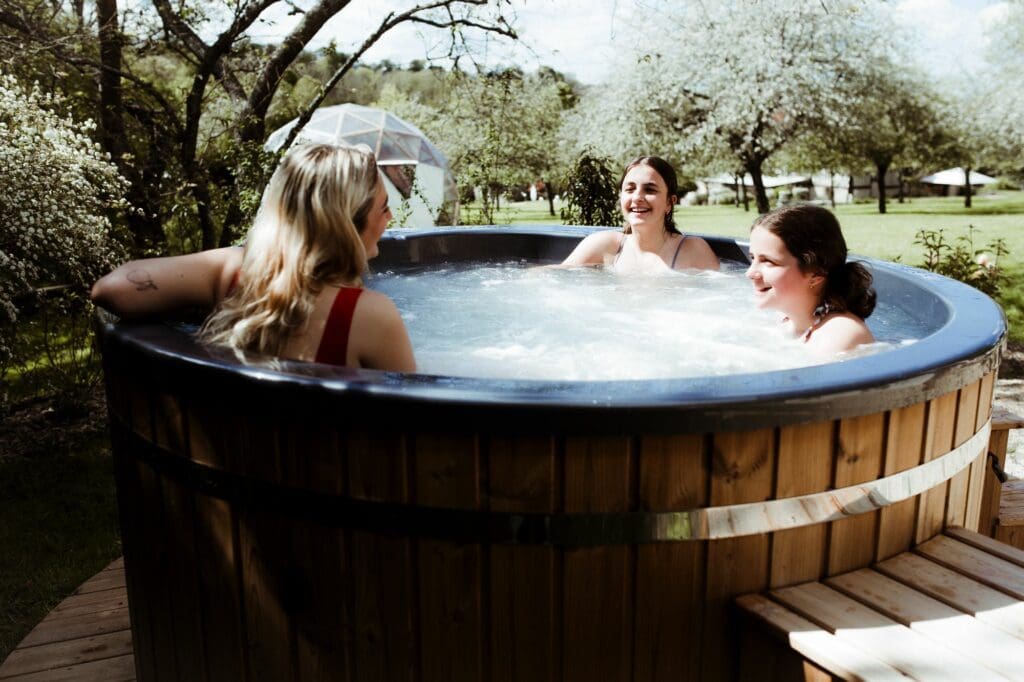An ancient ritual, the bath invites relaxation and purification. The water, fluid and soothing, envelops the body with a beneficial caress, releasing accumulated tension. A sacred moment, a break where time seems suspended, the bath allows the mind to wander and recharge its batteries. In this intimate sanctuary, body and mind unite in harmonious communion, offering a welcome escape from the tumult of everyday life.
The art of bathing through the centuries and around the world
Since ancient times, the art of bathing has held particular importance in many cultures. Much more than a simple act of hygiene, it is a sacred practice, of relaxation, purification, also of socialization, which nourishes the body, mind and soul, and which plays a central role in the daily and spiritual lives of people.
Ancient civilizations all practiced varying forms of ritual and therapeutic bathing.
The Greeks attach great importance to public baths, considered places of meeting and intellectual discussion.
In the Roman baths, citizens can bathe, socialize and relax.
In ancient Egypt, baths were used for ritual and medicinal purposes. The Egyptians believed in the healing powers of water and used herbs and fragrant oils to increase the benefits of bathing. And everyone knows the legend that Cleopatra took baths in donkey's milk to preserve her beauty and youth.
In India, a religious ritual in the waters of the Ganges or the purifying and curative precept of Ayurveda, bathing is a sacred practice.
Originally from the Middle East, the hammam, or Turkish bath, combines steam and treatments to cleanse and exfoliate the skin. We get rid of physical and spiritual impurities through a relaxing and regenerating experience.
In Scandinavia, the sauna – traditionally in a small wooden cabin heated by burning lava stones – is at the heart of bathing culture. After a moment of deep relaxation in dry heat, going under a cold shower stimulates blood circulation and tightens the pores of the skin.
Today, the art of bathing continues to evolve, with influences from ancient traditions and contemporary practices, transcending cultural and geographic boundaries.
Ayurvedic bath
The art of Ayurvedic bathing has its roots in traditional Indian medicine, Ayurveda, which aims to balance the body, mind and soul. In this practice, bathing is considered a sacred ritual of purification and healing.
Ayurvedic baths are often enriched with herbs, spices and essential oils, selected according to the individual needs of each person according to their dosha (Ayurvedic constitution).
Before bathing, a self-massage with oil, called “Abhyanga”, is often performed to nourish the skin, stimulate circulation and calm the mind. While bathing, the water is often scented with essential oils.
The art of Ayurvedic bathing is a holistic practice that promotes harmony and well-being at all levels of the being.
The Japanese bath
A true art of living, the Japanese bath, called “ofuro”, is a deeply relaxing and purifying experience.
Traditionally, ofuro takes place in a deep wooden bath which gives off a delicate and soothing scent. Before entering the bath, the body must be thoroughly washed. Once in the hot water, the Japanese take their time to relax, meditate and recharge their batteries.
The Japanese bath is also a symbol of connection with nature. The Japanese attach great importance to water, considered sacred, and to the benefits of aromatic plants which can be added to water to increase its therapeutic properties.
The virtues of the bath
Some of the main virtues associated with the ancestral practice of bathing, affecting the body, mind and soul:
- Muscle relaxation and stress relief
Hot water helps relieve tension, thus promoting a feeling of general well-being. - Improved blood circulation
Hot water dilates blood vessels, improves blood circulation and reduces inflammation. - Joint pain relief
- Skin cleansing
Under the effect of hot water, the pores of the skin open and release toxins, making the skin healthier and radiant. - Mental and emotional benefits
Bathing provides a moment of calm for mediation and relaxation, helping to calm the mind and reduce anxiety. - Improved sleep
By preparing your body for rest with a warm bath, sleep can be more restful.
The word “spa” is said to have its origins in the Belgian town of Spa, famous since Antiquity for its thermal springs. The nobility went to Spa to benefit from the healing properties of its mineral waters. Over time, the term "spa" has become synonymous with any establishment offering water treatments focused on wellness.
Unless it is the acronym of a Latin phrase Sana/Salum/Sanitas per aquam, “health through water”.

The art of bathing at the Enchanted Coq
Imagine a green garden, a true paradise of relaxation nestled in the heart of nature. At Le Coq enchanté, each individual house has an open-air spa and La Pommeraie has a panoramic sauna and spa, providing a peaceful retreat in which to escape the hustle and bustle of everyday life and recharge your batteries in complete peace and quiet. tranquility.
Harmoniously integrated into the local architecture and natural landscape of the Estate, the spas, true oases of well-being, allow residents to retreat, refocus and reconnect while enjoying the therapeutic benefits of water and nature.
Imagine lounging in a hot tub surrounded by the sound of birds and the scent of flowers, or admiring the stars. Here, taking care of yourself is not limited to a simple routine, but becomes an immersive and regenerating experience. Each home becomes a sanctuary of well-being where body, mind and soul find balance within a soothing garden.
